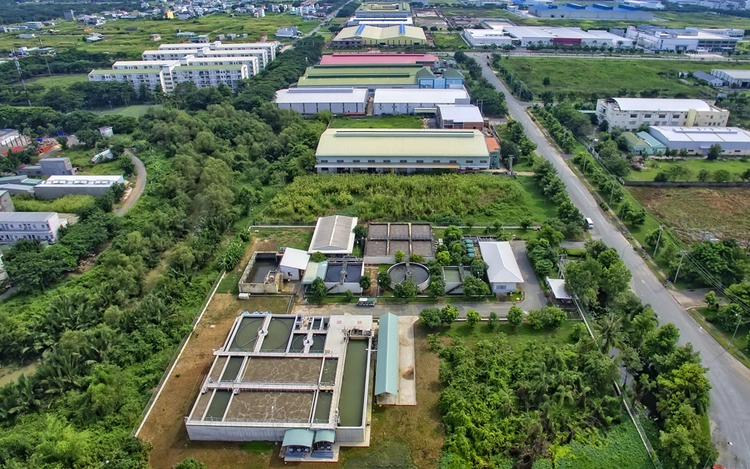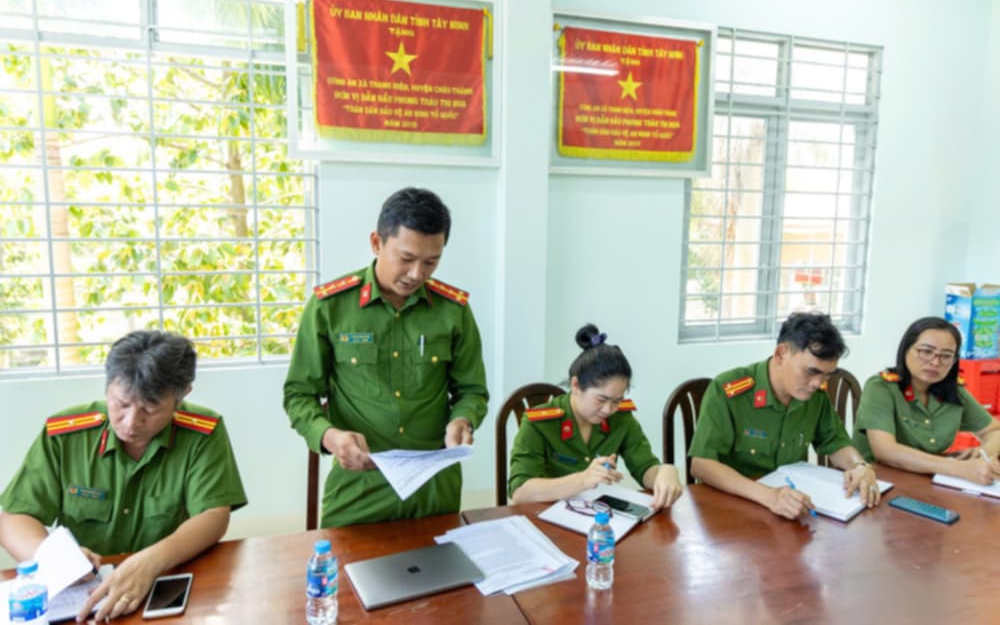
An aerial view of a green industrial park in Tay Ninh Province, southern Vietnam, featuring wastewater treatment systems that help protect the environment. Photo: An Long / Tuoi Tre
Thanks to fast land clearance and an improved PGI, which assesses the environmental performance of provinces from a business perspective, Tay Ninh now hosts many green industrial parks equipped with wastewater treatment systems that protect the environment and attract investors.
Driving major projects through land clearance
Nguyen Tan Thuan, deputy director of the Tay Ninh Department of Agriculture and Environment, stated that in the former Long An Province area, between 2021 and 2025, the plan was to reclaim over 3,900 hectares of land.
So far, more than 3,800 hectares has been cleared, reaching over 97 percent of the target.
In just the first six months of 2025, the former Long An Province compensated and cleared over 578 hectares, exceeding the plan by 55 percent.
"Especially for key transportation projects like Provincial Roads 830E, 822B, Ho Chi Minh City's Ring Road 4, industrial parks such as Nam Tan Tap, Thu Thua, Loc Giang, and urban projects in Ben Luc, Duc Hoa, Can Giuoc, the progress has been accelerated," Thuan said.
"Land clearance has been completed on schedule to meet provincial requirements and allow investors to begin their projects."
According to Thuan, the province's issuance of land price adjustment coefficients by area and project has made compensation processes more transparent, realistic, and widely accepted by residents.
Alongside this, fast price appraisal processes have helped increase state budget revenue and facilitated investors' timely payment of land taxes.
Meanwhile, in the former Tay Ninh Province, land clearance work has been well-organized, from resettlement planning to digital file management.
The clearance progress for key projects like the Ho Chi Minh City–Moc Bai Expressway, Phuoc Dong–Boi Loi Industrial Park, and the N8–787B–789 regional connecting roads has all stayed on schedule.
Notably, the one-stop-shop model and the strong application of technology—such as digital surveying, electronic price appraisal, and clearance file management through software systems—have helped businesses and residents access information and complete land clearance procedures easily, reducing time and minimizing errors.
Continuing to improve PGI
As a criterion that many investors care about, the PGI remains a priority for the new Tay Ninh leadership after the merger, with a continued focus on improvement.
Thuan noted that the former Long An Province has made significant breakthroughs in recent years.
While in 2022, Long An ranked 28th nationwaide in the PGI with a score of 15.04, by 2024, it rose to sixth place with a score of 27.56.
This success results from local environmental sector investments, such as automatic surface water and air quality monitoring stations, and requiring factories with pollution risks to install monitoring systems connected directly to authorities for strict environmental violation management.
Similarly, in the former Tay Ninh Province, environmental technologies such as automatic wastewater monitoring systems in industrial parks and environmental supervision stations at large enterprises have been installed for years.
New investment projects are also required to conduct thorough environmental impact assessments, integrate energy-saving technologies, and control greenhouse gas emissions.
Tay Ninh was also among the first provinces to apply the Alternate Wetting and Drying (AWD) water-saving irrigation model in rice cultivation, helping reduce methane emissions and conserve water resources.
"Previously, both [old] provinces had issued plans and solutions to improve and raise the Provincial Green Index," Thuan said.
"After the merger, Tay Ninh will continue implementing these plans.
"Specifically, it will aim to reduce greenhouse gas emissions toward net-zero emissions by 2050, encourage existing businesses to adopt modern technologies to cut emissions, and prioritize industries with low emissions and environmental friendliness.
"At the same time, the province will promote awareness and mobilize residents and businesses to green their economic sectors, lifestyles, and transition processes under principles of equity, inclusiveness, and enhancing community resilience to climate change."




Max: 1500 characters
There are no comments yet. Be the first to comment.